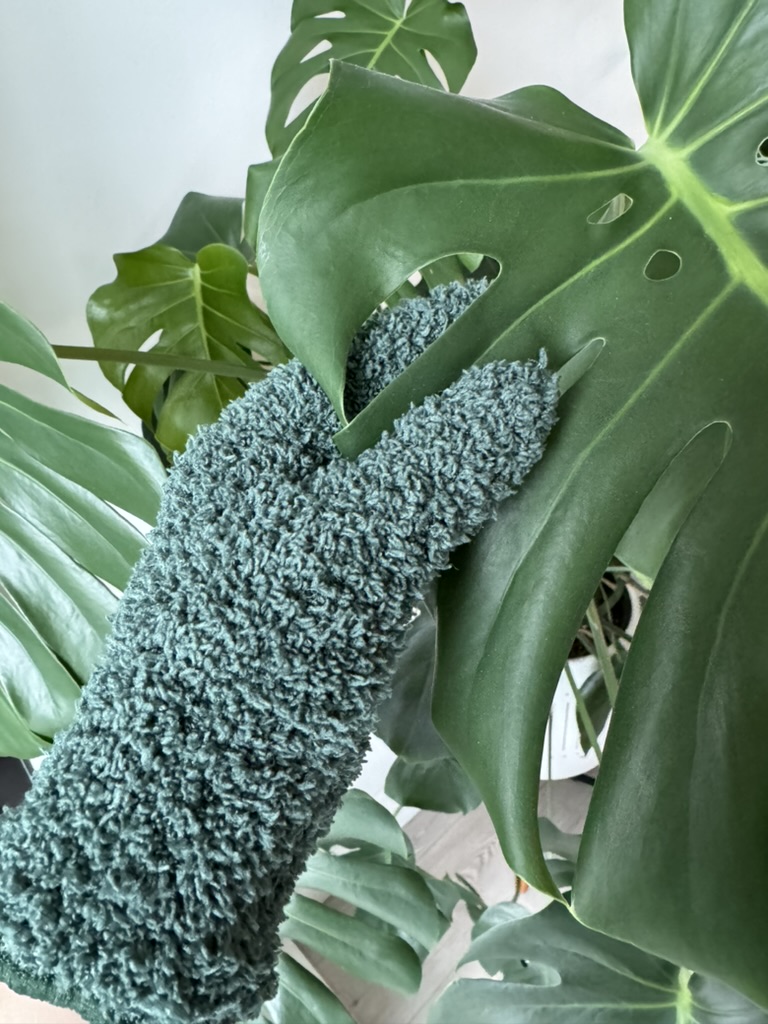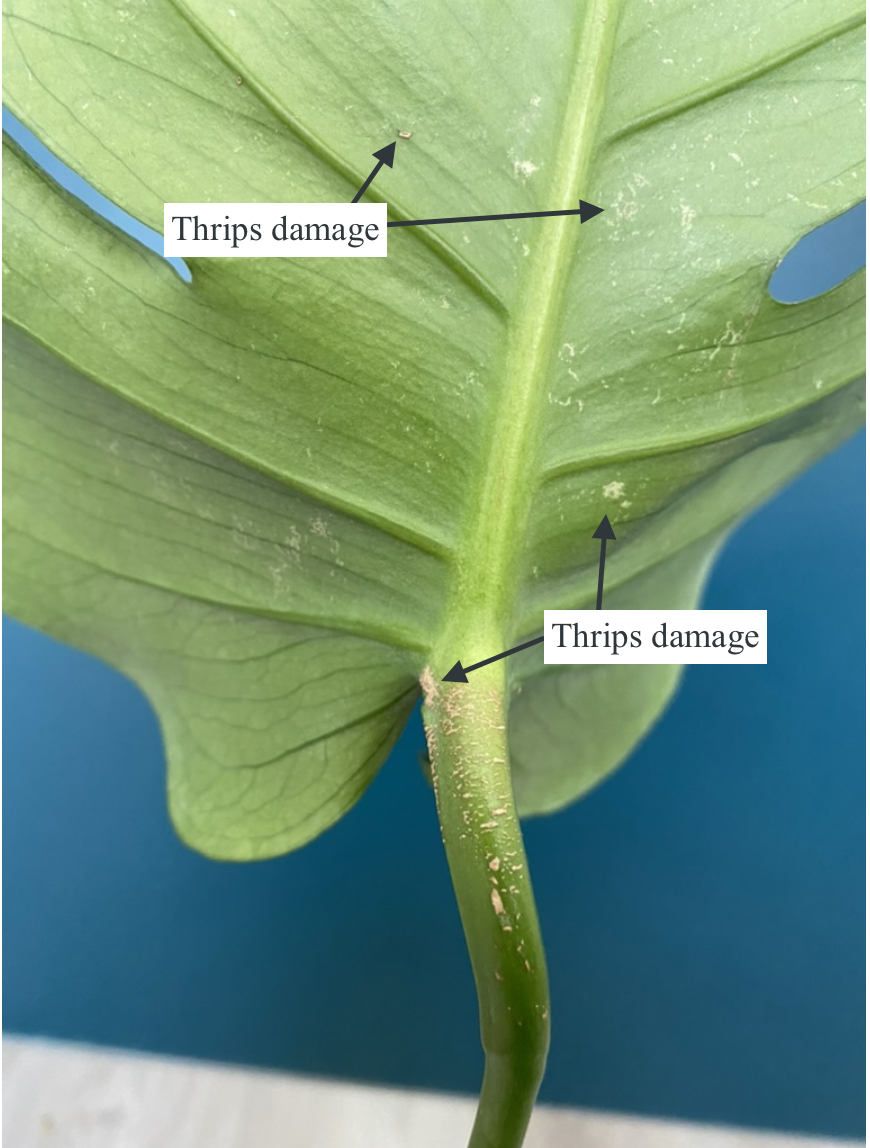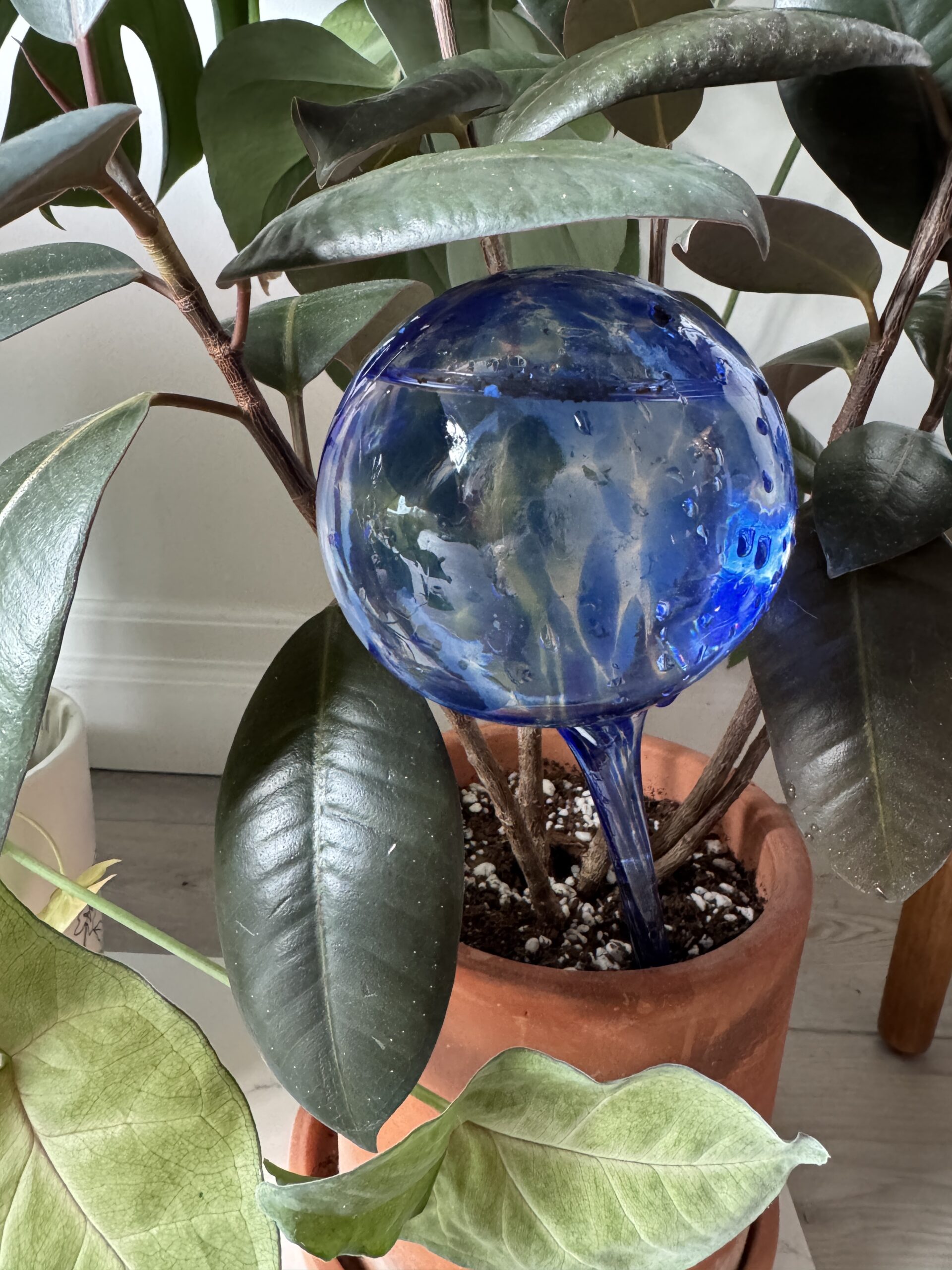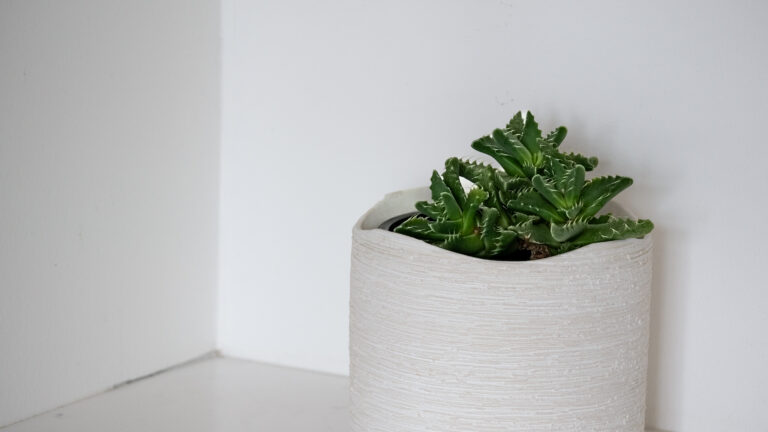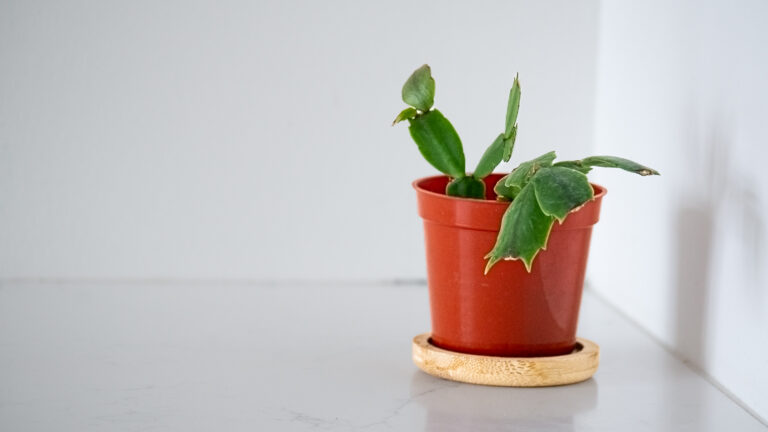Bear’s Paw succulent or Cotyledon tomentosa is a member of the Crassulaceae family. It is native to the Eastern Cape Province of South Africa.
Cotyledon tomentosa is referred to as Bear’s Paw succulent because its leaves are shaped like a Bear’s Paw. They are also very soft.
The history of Cotyledon tomentosa is limited.
There are around 1,600 to 1,800 species of the Crassulacae family.
Bear’s Paw Succulent Appearance & Growth Habit
Bear’s Paw leaves are green, chunky, fuzzy and shaped-like a bear’s paw. This succulent grows from a compact rosette, and on stems.
It is instantly recognizable for its chubby, oval-shaped leaves, each tipped with tiny, soft “teeth” that resemble the claws of a bear’s paw. These leaves are covered in a fine, velvety fuzz that gives the plant a plush, silvery-green appearance.
The foliage grows in tight clusters along short, branching stems, creating a compact, bushy silhouette that can eventually spill over the edges of a pot as the plant matures.
When grown in bright light, the leaf tips may develop a reddish tint (looking even more like claws).
Overall, this succulent is prized for its whimsical, paw-like leaves, and its ability to bring both texture and character to any succulent collection. It’s also nice that the fuzz on this succulent is soft and doesn’t hurt you like a cacti.
Light Requirements for Bear’s Paw Succulent Indoors
Bear’s Paw thrives in a mixture of bright and indirect light. They like a few hours of sun in the morning with more indirect light in the afternoon.
For best results indoors, place your Bear’s Paw near an east- or west-facing window where it can receive gentle, filtered sunlight without the harsh intensity of midday rays.
Avoid south-facing windows with strong afternoon sun, which can scorch the precious, fuzzy leaves.
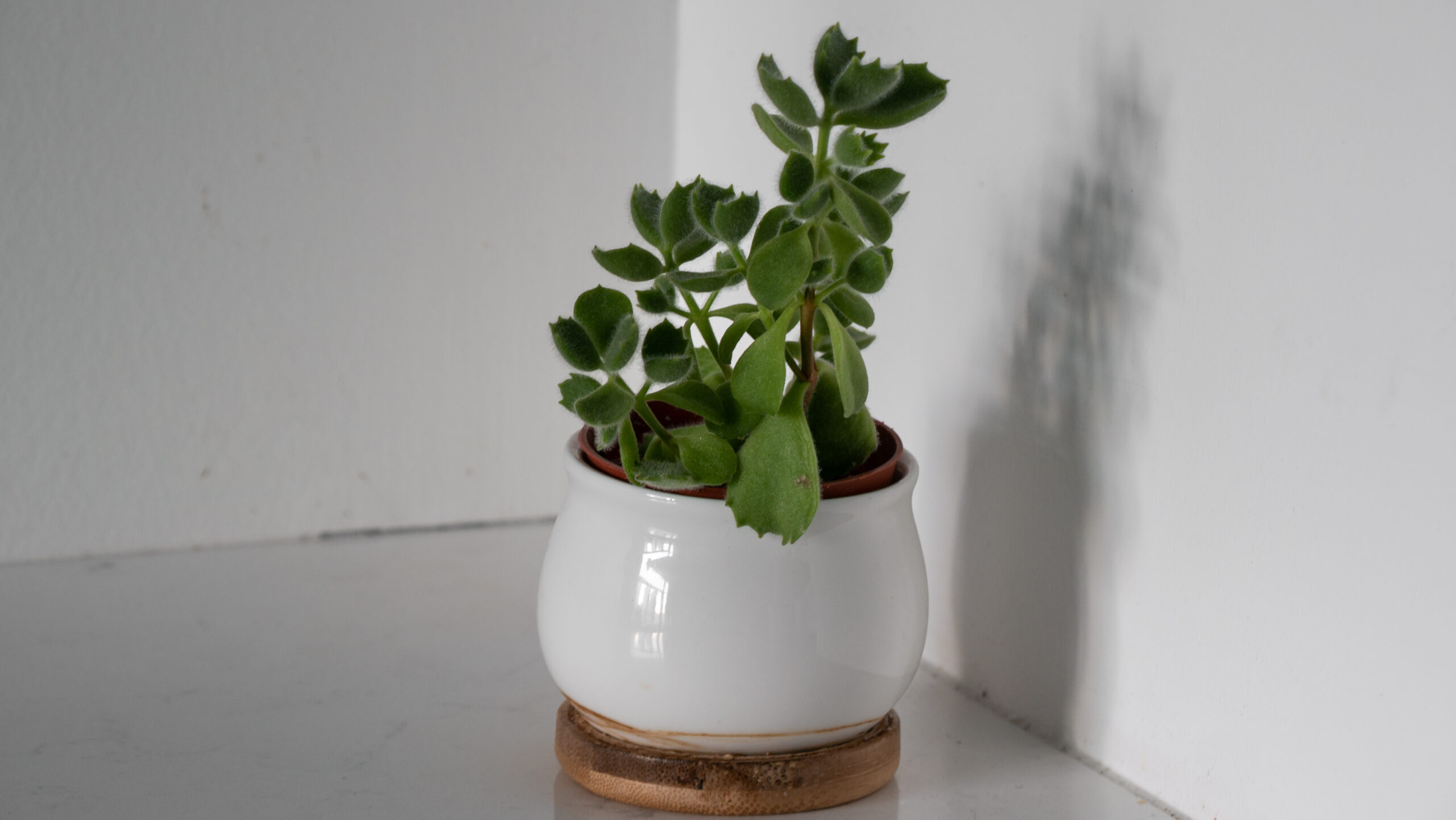
Ideal Temperature & Humidity for Bear’s Paw Succulent
Bear’s Paw like temperatures between 15-24 degrees celsius, and lower humidity. Since they come from arid regions, they prefer drier air, but do well in average household humidity levels (40-60%). You just don’t want to put it too close to your humidifier.
I keep my succulent closer to the window and further from the humidifier (I use the Levoit Hybrid Ultrasonic Humidifier (LV600HH)). I use my humidifier to ensure the humidity levels in my apartment stay between 40% and 60%. Since I live in Canada and the winters can be very dry, and the humidity can drop below 30% humidity, so its helpful to set the humidity at about 45% or 50% in this season to keep all of my plants happy.
Growth Rate & Fertilizer Needs for Bear’s Paw Succulent
On average, Bear’s Paw grow as tall as 12″. New foliage grows like offshoots from the main plant. The offshoots are rosettes and they are made up of many leaves.
To encourage healthy, plump leaves, fertilize your Bear’s Paw Succulent once a month in spring and summer seasons.
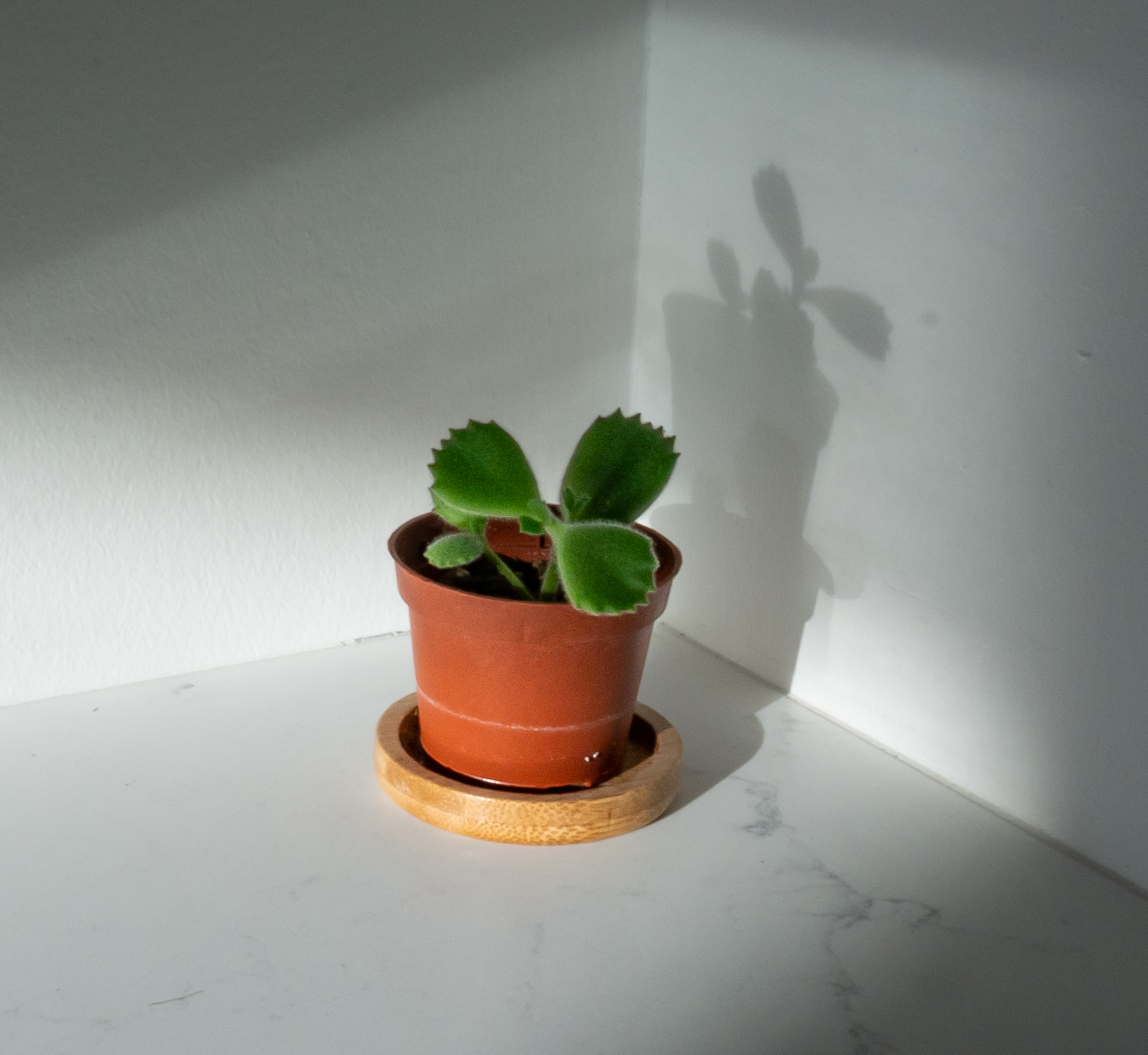
Bear’s Paw Succulent Blooming: What to Expect Indoors
This succulent t can produce small, bell-shaped orange or yellow flowers (usually in late spring or early summer). However, indoor blooming is rare, and typically occurs only when the plant receives plenty of bright light and ideal care (that mimics its outdoor environment).
Most growers appreciate Bear’s Paw for its fuzzy, paw-shaped leaves rather than its blooms.
How to Propagate Bear’s Paw Succulent (Leaves & Cuttings)
The easiest way to start a new Bear’s Paw succulent is by stem. This is unusual for a succulent, which are typically propagated by their leaves.
- Stem Cuttings: Choose a leaf with the stem from a healthy adult plant. Make sure the stem is included in the cutting or this method won’t work. Wait for the cutting to callus over in a well lit spot. This should take a couple of days. Once the callus is formed, you can pot it into a well-draining potting mix.
Patience is key with propagation. Give your new plant time to settle into its environment. Once you see new growth, you know your plant is well established.
When & How to Repot Bear’s Paw Succulent
Signs your succulent are ready to be repotted include:
- Roots growing out of the drainage holes
- It has been 1.5 to 2 years since you last changed the soil
- The plant looks much larger than the pot it is in
To learn how to repot this plant, watch the video below, or follow the steps below.
How To Repot Bear’s Paw Succulent
- Choose a pot that is slightly larger (2″) than the current one with a drainage hole.
- Cover the bottom of the new pot with a fresh, well-draining succulent mix.
- Gently remove the Bear’s Paw from its current pot (taking care to not damage the delicate, fuzzy leaves).
- Gently detangle the roots from its current soil. If this will cause excessive damage the roots or the plant, you can just place it in the new pot.
- Place the Bear’s Paw in the new pot, add additional soil as required, ensuring the roots are 1″ below the top of the pot.
- Gently pat down the soil around the base of your succulent, ensuring it is secure.
- Water lightly, and place it back in its bright, indirect light spot in your home.
For everything you will need to ensure a successful repot, check-out my repotting essentials guide.
Watering Bear’s Paw Succulent: How & When Indoors
As Bear’s Paw is a succulent, it likes to dry out between waterings. To determine if your plant needs water, you can stick your finger in the soil (1 to 2 inches) and if it is dry, its ready for water!
If you don’t want to get your hands dirty, you can try a moisture meter (I personally have not used one, but I know quite a few people who do, and this one is really highly rated on Amazon).
This plant typically needs to be watered every 2 to 4 weeks (depending on your environment).
I typically bottom water this plant through the drainage hole of the pot on a tray. It’s the easiest way to know if your plant is thirsty or not. Overwatering can lead to fungus gnats, root rot, or the death of your plant.
You can top water, but it’s best to do so in a pot with drainage until water is flowing out of the hole. If your pot doesn’t have drainage, you might accidentally drown your plant or make some fungus gnats very happy.
You should top water from time to time to make sure any built up minerals can wash through the plant. The water should drip out of the bottom of your drainage hole.
If you are going to be away for an extended period of time, and are worried about watering your Bear’s Paw Succulent, check-out my guide on 3 ways to keep your plants alive while on vacation.
Common Pests & Problems in Bear’s Paw Succulent
Bear’s Paw are fairly pest tolerant, however they can face the following pests and problems.
Pests of Bear’s Paw Succulent
- Mealy Bugs: these look like little white cotton balls on the plant. You can remove these with your fingers if you catch them early enough, but I would use a cotton swab with a drop of Isopropyl alcohol and try to scrape them off the stem.
- Scale: I’ve never personally had scale (knock on wood) and I am very thankful. Scale are small, brownish, round or oval insects that attach themselves to the leaves or stems of the plant. They are hard to notice as they appear like a growth or bump on the plant. Scale can cause yellowing, wilting, and weakened growth. Removing scale from a plant is tedious, like with mealybugs. You can remove scale by manually removing them with a cotton swab with rubbing alcohol, using insecticidal soap or horticultural oil.
- Aphids: Aphids are small, insects that cluster under leaves and stems. They can appear white, brown, black, gray, light green or yellow. If you see distortion, wilting or yellowing leaves, this can be a sign of aphids. You should be able to spray them off with a strong stream of water or using insecticidal soap.
Other Common Problems of Bear’s Paw Succulent
- Overwatering: Root rot happens from overwatering your plant with insufficient drainage. You can improve the drainage of your plant by ensuring your plant is potted in a planter with a drainage hole and using a well draining soil (something with a decent amount of perlite). You can also end up with fungus gnats or fungal disease from overwatering.
- Sunburn: Even though you will often find this plant in bright, sunny environments, they can be burned. Just like in humans plants can burn. Their leaves can start to turn red, yellow, white, bleached or sometimes kind of purple. To fix sunburn in the succulent you can move it to a less sunny place.
Bear’s Paw Succulent Toxicity
Bear’s Paw succulent is typically safe to handle for humans, but can be toxic to both pets and humans if ingested in large quantities. If ingestedthis may cause gastrointestinal discomfort in humans, and pets.
Keep this succulent out of reach of curious children and animals to be on the safe side.
Bear’s Paw Quick Care Guide
| Scientific Name | Cotyledon tomentosa |
| Nickname | Bear’s Paw Succulent |
| Origins | Eastern Cape Province of South Africa |
| Light | Bright, direct (only for a couple hrs a day) and indirect, medium-light. |
| Temperature | 15-24 degrees celsius |
| Humidity | Low |
| Height | Up to 12″ |
| Blooms | Yes, it can in summer |
| Propagate | Stem cuttings, offsets/pups, division, leaf cuttings |
| Water Frequency | When dry (likely once a month) |
| Pests | Mealy Bugs, Aphids, Scale |
| Common Problems | Overwatering (root rot), fungal disease, sunburn, overcrowding |
| Toxicity | Mild (not safe when ingested) |

